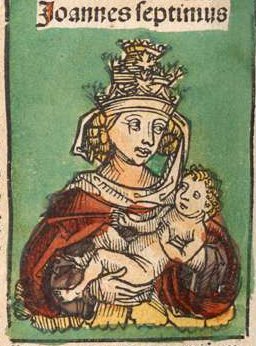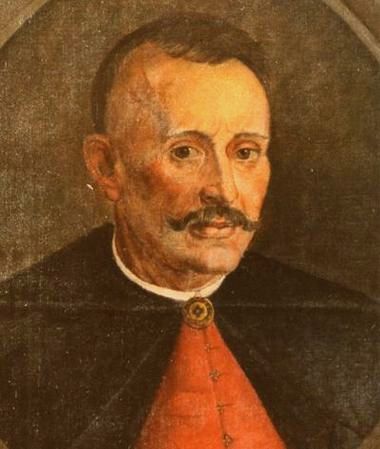|
Daniel Zwicker
Daniel Zwicker (22 January 1612 – 10 November 1678) was a German physician from Danzig, and a Socinian theologian and controversialist of the Polish Brethren. Life He was the son of Friedrich Zwicker, Lutheran minister of the Church of St. Bartholomew at Danzig. He was educated for the medical profession at the University of Königsberg which he entered in 1629, and where he graduated with a Doctor's degree. Florian Crusius first influenced him in the direction of Unitarian theology. He met with considerable opposition, beginning with his brother Friedrich who had succeeded his father as minister. He left Danzig for Poland. Meeting some Hutterite missionaries from Slovakia, around 1650, he spent time at Bruderhofs in the community of Andreas Ehrenpreis; but returned to Danzig. He returned to Strassin, where he lived for a while. From 1657 he moved to the Netherlands, and died in Amsterdam. Works His main theological interest lay in patristics. His ''Irenicum Irenicorum'' ... [...More Info...] [...Related Items...] OR: [Wikipedia] [Google] [Baidu] |
Amsterdam
Amsterdam ( , , , lit. ''The Dam on the River Amstel'') is the Capital of the Netherlands, capital and Municipalities of the Netherlands, most populous city of the Netherlands, with The Hague being the seat of government. It has a population of 907,976 within the city proper, 1,558,755 in the City Region of Amsterdam, urban area and 2,480,394 in the Amsterdam metropolitan area, metropolitan area. Located in the Provinces of the Netherlands, Dutch province of North Holland, Amsterdam is colloquially referred to as the "Venice of the North", for its large number of canals, now designated a World Heritage Site, UNESCO World Heritage Site. Amsterdam was founded at the mouth of the Amstel River that was dammed to control flooding; the city's name derives from the Amstel dam. Originally a small fishing village in the late 12th century, Amsterdam became a major world port during the Dutch Golden Age of the 17th century, when the Netherlands was an economic powerhouse. Amsterdam is th ... [...More Info...] [...Related Items...] OR: [Wikipedia] [Google] [Baidu] |
Samuel Maresius
Samuel Des Marets or Desmarets ( la, Maresius; Oisemont, 1599 – Groningen, 18 May 1673) was a French Protestant theologian.'III. Maréts (Samuel des)' in L.M. Chaudon, ''Dictionnaire Universel, Historique, Critique, et Bibliographique'', 19 Vols (Mame, Paris 1810-1812), XIpp. 125-26 "né à Oismond en Picardie l'an 1599, avec des dispositions heureuses, étudia à Paris, à Saumur et à Genève." Life He was born in Picardy, northern France. He studied in Paris, in Saumur Academy under Gomarus, and in Geneva at the time of the Synod of Dort. He was ordained in 1620, and preached at Laon until a controversy with Roman Catholic missionaries. Feeling his life was in danger, he left in 1624. which led to an attack on his life. He became professor at the Academy of Sedan (1625), pastor at Maastricht (1632), pastor and professor at 's-Hertogenbosch (1636), and at Groningen (1643). He won a reputation that led to calls to Saumur, Marburg, Lausanne, and Leiden. He died at Gronin ... [...More Info...] [...Related Items...] OR: [Wikipedia] [Google] [Baidu] |
Pope Joan
Pope Joan (''Ioannes Anglicus'', 855–857) was, according to legend, a woman who reigned as pope for two years during the Middle Ages. Her story first appeared in chronicles in the 13th century and subsequently spread throughout Europe. The story was widely believed for centuries, but most modern scholars regard it as fictional. Most versions of her story describe her as a talented and learned woman who disguised herself as a man, often at the behest of a lover. In the most common accounts, owing to her abilities she rose through the church hierarchy and was eventually elected pope. Her sex was revealed when she gave birth during a procession and she died shortly after, either through murder or of natural causes. The accounts state that later church processions avoided this spot and that the Vatican removed the female pope from its official lists and crafted a ritual to ensure that future popes were male. In the 16th century, Siena Cathedral featured a bust of Joan among other ... [...More Info...] [...Related Items...] OR: [Wikipedia] [Google] [Baidu] |
David Blondel
David Blondel (1591 – 6 April 1655) was a French Protestant clergyman, historian and classical scholar. Life He was born at Châlons-en-Champagne. Ordained in 1614, he had positions as parish priest at Houdan and Roucy. After 1644, he was relieved of duties, and supported free to study full-time. In 1650 he succeeded GJ Vossius in the professorship of history at the university of Amsterdam. His students included Francis Turretin, and Johann Georg Graevius. Works His works were very numerous. In some of them he took a strong critical line with mythological and counterfeit material current as fact in the early modern period. This brought him the admiration of major Enlightenment intellectuals. Jonathan Israel writes: ...the real work of discrediting and disposing of the '' Oracula Sibyllina'', Chaldean chronicles, and Orphic hymns, ... seemingly only began, as Diderot noted in 1751, in the 1650s when the Huguenot scholar David Blondel ... published his treatise on the ''O ... [...More Info...] [...Related Items...] OR: [Wikipedia] [Google] [Baidu] |
Comenius
John Amos Comenius (; cs, Jan Amos Komenský; pl, Jan Amos Komeński; german: Johann Amos Comenius; Latinized: ''Ioannes Amos Comenius''; 28 March 1592 – 15 November 1670) was a Czech philosopher, pedagogue and theologian who is considered the father of modern education. He served as the last bishop of the Unity of the Brethren before becoming a religious refugee and one of the earliest champions of universal education, a concept eventually set forth in his book ''Didactica Magna''. As an educator and theologian, he led schools and advised governments across Protestant Europe through the middle of the seventeenth century. Comenius introduced a number of educational concepts and innovations including pictorial textbooks written in native languages instead of Latin, teaching based in gradual development from simple to more comprehensive concepts, lifelong learning with a focus on logical thinking over dull memorization, equal opportunity for impoverished children, education ... [...More Info...] [...Related Items...] OR: [Wikipedia] [Google] [Baidu] |
Samuel Przypkowski
Samuel Przypkowski (Przipcovius, Pripcovius) (1592–19 April 1670, Königsberg) was a Polish Socinian theologian, a leading figure in the Polish Brethren and an advocate of religious toleration. In ''Dissertatio de pace et concordia ecclesiae'', published in 1628 in Amsterdam, he called for mutual tolerance by Christians. He was also a poet in Latin and Polish. Notes {{DEFAULTSORT:Przypkowski, Samuel 1592 births 1670 deaths People from Brzesko County Polish Unitarian theologians 17th-century Polish writers ... [...More Info...] [...Related Items...] OR: [Wikipedia] [Google] [Baidu] |
Gilbert Clerke
Gilbert Clerke (1626–c.1697) was an English mathematician, natural philosopher and Socinian theological writer. Life Born at Uppingham, Rutland, in 1626, he was a son of John Clerke, master of the school there. In 1641 he was admitted to Sidney Sussex College, Cambridge, and there he proceeded M.A., being elected a fellow in 1648. In 1651 he received presbyterian ordination; he became proctor also in the next year, 1652; but in 1655 he resigned his fellowship and left the university, because the statutes required him to take the degree of Bachelor of Divinity, and his conscientious scruples made this impossible. His ability brought him into communication with Richard Cumberland, his contemporary at Cambridge, and with William Whiston; but, inheriting a small property at Loddington, Northamptonshire, he quietly pursued his mathematical studies in that county to the end of his life. He did approach Isaac Newton for some clarification of the '' Principia''. His directions to f ... [...More Info...] [...Related Items...] OR: [Wikipedia] [Google] [Baidu] |
Christopher Sandius
Christopher Sandius Jr. (Königsberg, October 12, 1644 – Amsterdam, November 30, 1680) was an Arian writer and publisher of Socinian works without himself being a Socinian. His name was Latinized as Christophorus Sandius, though his German name appears to have been Christoph Sand, and he was known as Christof Van den Sand during his later years in the Netherlands. Following research by Lech Szczucki it appears that Sandius Jr. was well educated by his rigorous father, Christopher Sandius Sr., (d.1686) a government official in Königsberg, who himself was later removed from his office for anti-Trinitarian sympathies. Sandius Jr. moved to Amsterdam and earned his living as an editor, translator and publisher, he became well-recognized among European intellectuals. Sandius Jr. promoted the view that Arianism was the high point of the theology of the Early Church. He remained on good terms with exiled Polish Socinians Andrzej Wiszowaty and Stanislaw Lubieniecki, while engaging in fri ... [...More Info...] [...Related Items...] OR: [Wikipedia] [Google] [Baidu] |
Robert Nelson (nonjuror)
Robert Nelson (22 June 1656 – 16 January 1715) was an English lay religious writer and nonjuror. Life He was born in London on 22 June 1656, the only surviving son of John Nelson, a merchant in the Turkey trade, by Delicia, daughter of Sir Lewis and sister of Sir Gabriel Roberts, who, like John Nelson, were members of the Levant Company. John Nelson died on 4 September 1657, leaving a good fortune to his son. His mother sent Robert for a time to St Paul's School, but then took him home. She settled at Driffield Gloucestershire, the home of her sister Anne, wife of George Hanger, also a member of the Levant Company. Here George Bull, then rector of Siddington in the neighbourhood, acted as his tutor. He entered Trinity College, Cambridge, as fellow commoner in 1678, but never resided. As early as 1680 he began an affectionate correspondence with John Tillotson, who was a friend of Sir Gabriel Roberts. He was chosen a fellow of the Royal Society on 1 April 1680. He then we ... [...More Info...] [...Related Items...] OR: [Wikipedia] [Google] [Baidu] |
George Bull
George Bull (25 March 1634 – 17 February 1710) was an English theologian and Bishop of St David's. Life He was born, 25 March 1634, in the parish of St. Cuthbert, Wells, and educated in the grammar school at Wells, and then at Blundell's School in Tiverton under Samuel Butler. Before he was fourteen years old he went into residence at Exeter College, Oxford, where he became a friend of Thomas Clifford. In 1649, his tutor Baldwin Ackland refused to take the engagement, and together they left the university and settled at North Cadbury in Somerset. He then studied under William Thomas, rector of Ubley and a puritan divine; Bull, however, was more influenced by his son Samuel Thomas, who directed Bull to read Richard Hooker, Henry Hammond, and Jeremy Taylor. On leaving Thomas, Bull applied to Robert Skinner, the ejected bishop of Oxford, for episcopal ordination, and was ordained by him deacon and priest the same day, aged 21. After his ordination he took the small livin ... [...More Info...] [...Related Items...] OR: [Wikipedia] [Google] [Baidu] |
Incarnation
Incarnation literally means ''embodied in flesh'' or ''taking on flesh''. It refers to the conception and the embodiment of a deity or spirit in some earthly form or the appearance of a god as a human. If capitalized, it is the union of divinity with humanity in Jesus Christ. In its religious context the word is used to mean a god, deity, or divine being in human or animal form on Earth. Abrahamic religions Christianity The incarnation of Christ is the central Christian doctrine that God became flesh, assumed a human nature, and became a man in the form of Jesus, the Son of God and the second person of the Trinity. This foundational Christian position holds that the divine nature of the Son of God was perfectly united with human nature in one divine Person, Jesus, making him both truly God and truly human. The theological term for this is hypostatic union: the second person of the Trinity, God the Son, became flesh when he was miraculously conceived in the womb of the Virg ... [...More Info...] [...Related Items...] OR: [Wikipedia] [Google] [Baidu] |
.jpg)
%2C_by_Jacob_van_Meurs_(I).jpg)



